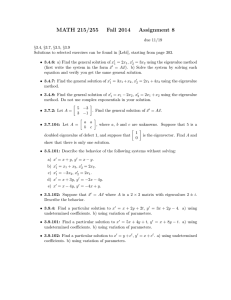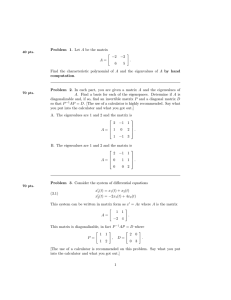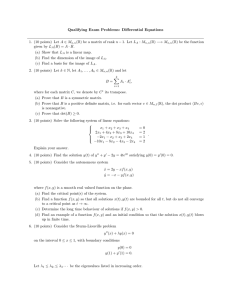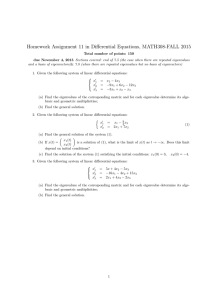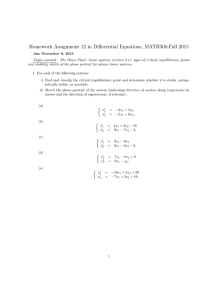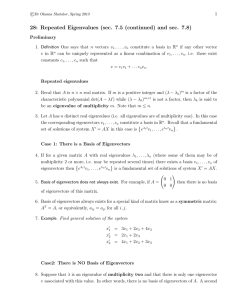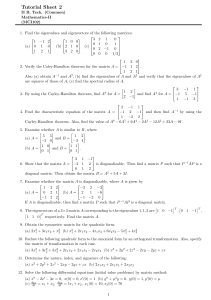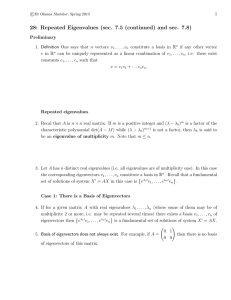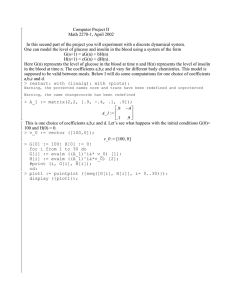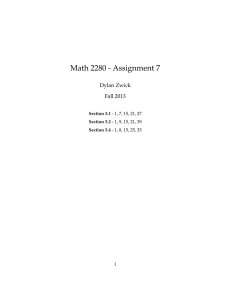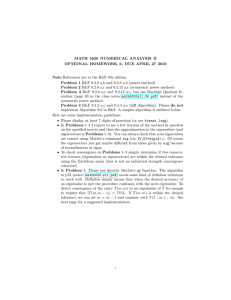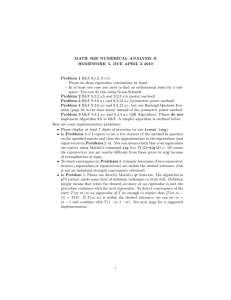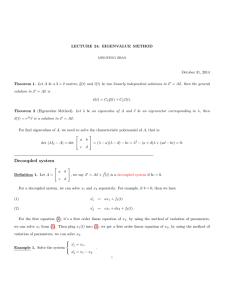Document 10583166
advertisement
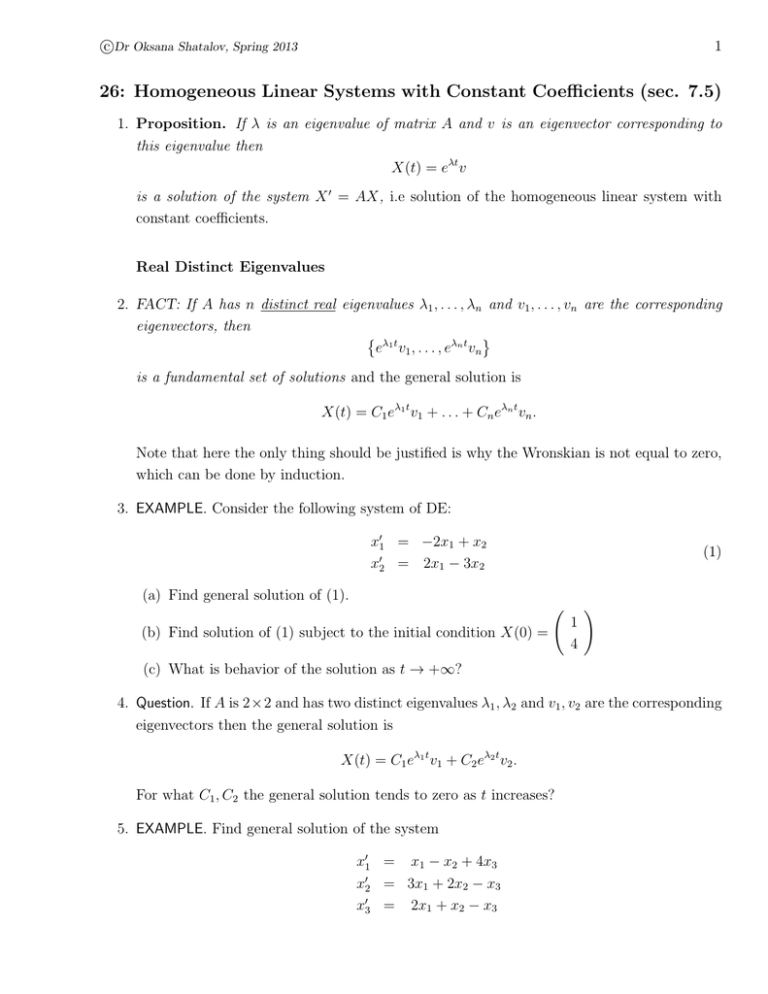
c Dr Oksana Shatalov, Spring 2013 1 26: Homogeneous Linear Systems with Constant Coefficients (sec. 7.5) 1. Proposition. If λ is an eigenvalue of matrix A and v is an eigenvector corresponding to this eigenvalue then X(t) = eλt v is a solution of the system X 0 = AX, i.e solution of the homogeneous linear system with constant coefficients. Real Distinct Eigenvalues 2. FACT: If A has n distinct real eigenvalues λ1 , . . . , λn and v1 , . . . , vn are the corresponding eigenvectors, then λ1 t e v1 , . . . , eλn t vn is a fundamental set of solutions and the general solution is X(t) = C1 eλ1 t v1 + . . . + Cn eλn t vn . Note that here the only thing should be justified is why the Wronskian is not equal to zero, which can be done by induction. 3. EXAMPLE. Consider the following system of DE: x01 = −2x1 + x2 x02 = 2x1 − 3x2 (1) (a) Find general solution of (1). (b) Find solution of (1) subject to the initial condition X(0) = 1 4 ! (c) What is behavior of the solution as t → +∞? 4. Question. If A is 2×2 and has two distinct eigenvalues λ1 , λ2 and v1 , v2 are the corresponding eigenvectors then the general solution is X(t) = C1 eλ1 t v1 + C2 eλ2 t v2 . For what C1 , C2 the general solution tends to zero as t increases? 5. EXAMPLE. Find general solution of the system x01 = x1 − x2 + 4x3 x02 = 3x1 + 2x2 − x3 x03 = 2x1 + x2 − x3

